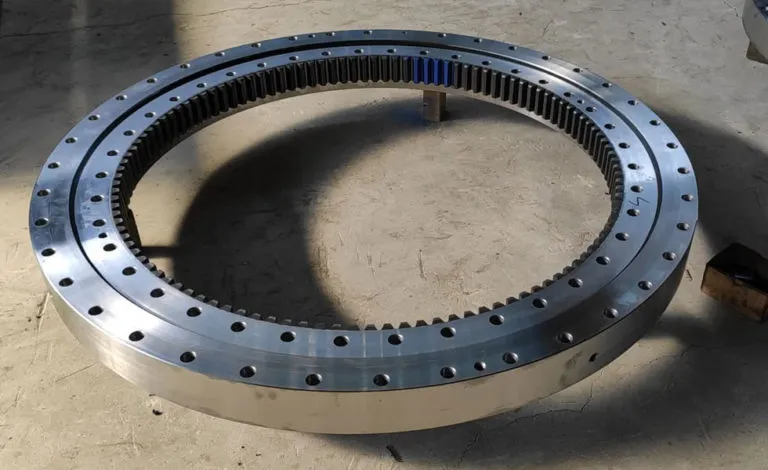-
Cangzhou Yulong Steel Co., Ltd.
-
Phone:
+86 13303177267 -
Email:
admin@ylsteelfittings.com
- English
- Arabic
- Italian
- Spanish
- Portuguese
- German
- kazakh
- Persian
- Greek
- French
- Russian
- Polish
- Thai
- Indonesian
- Vietnamese
- Zulu
- Korean
- Uzbek
- Hindi
- Serbian
- Malay
- Ukrainian
- Gujarati
- Haitian Creole
- hausa
- hawaiian
- Hebrew
- Miao
- Hungarian
- Icelandic
- igbo
- irish
- Japanese
- Javanese
- Kannada
- Khmer
- Rwandese
- Afrikaans
- Albanian
- Amharic
- Armenian
- Azerbaijani
- Basque
- Belarusian
- Bengali
- Bosnian
- Bulgarian
- Catalan
- Cebuano
- China
- China (Taiwan)
- Corsican
- Croatian
- Czech
- Danish
- Esperanto
- Estonian
- Finnish
- Frisian
- Galician
- Georgian
- Kurdish
- Kyrgyz
- Lao
- Latin
- Latvian
- Lithuanian
- Luxembourgish
- Macedonian
- Malgashi
- Malayalam
- Maltese
- Maori
- Marathi
- Mongolian
- Myanmar
- Nepali
- Norwegian
- Norwegian
- Occitan
- Pashto
- Dutch
- Punjabi
- Romanian
- Samoan
- Scottish Gaelic
- Sesotho
- Shona
- Sindhi
- Sinhala
- Slovak
- Slovenian
- Somali
- Sundanese
- Swahili
- Swedish
- Tagalog
- Tajik
- Tamil
- Tatar
- Telugu
- Turkish
- Turkmen
- Urdu
- Uighur
- Welsh
- Bantu
- Yiddish
- Yoruba

Nov . 25, 2024 07:44 Back to list
Understanding Pipe Thread Couplings for Effective Plumbing and Mechanical Connections
Understanding Pipe Thread Couplings A Comprehensive Overview
In the realm of plumbing, piping systems, and industrial applications, the integrity and reliability of connections are paramount. One of the most common methods for connecting pipes and tubes is through the use of pipe thread couplings. These couplings facilitate the joining of two pipes, enabling fluid transfer in various systems, from simple household plumbing to complex industrial machinery. This article delves into the intricacies of pipe thread couplings, discussing their types, advantages, applications, and installation processes.
What are Pipe Thread Couplings?
Pipe thread couplings are mechanical fittings designed to connect pipes or tubing together. They are manufactured with internal threads that match the external threads of the pipes being joined. The threads are typically made according to specific standards, ensuring compatibility across different systems. This compatibility is crucial in maintaining a leak-proof seal, which is essential for the efficient operation of fluid systems.
Types of Pipe Thread Couplings
There are two primary types of threaded connections used in pipe couplings tapered and straight threads.
1. Tapered Threads This type creates a seal as the pipe is screwed into the coupling, with the tapering threads allowing for a tighter fit as they engage. Tapered threads are commonly found in NPT (National Pipe Tapered) applications, which are widely used in North America. They ensure a more secure and leak-resistant connection, making them ideal for high-pressure applications.
2. Straight Threads Unlike tapered threads, straight threads do not create a seal on their own. Instead, they require an additional sealing mechanism, such as an O-ring or PTFE (Teflon) tape, to prevent leaks. Straight threads are typically found in larger piping systems and are often used in applications where frequent disassembly is necessary.
Advantages of Pipe Thread Couplings
Pipe thread couplings offer several benefits, making them a preferred choice in various industries
- Ease of Installation Threaded connections are relatively easy to install. With basic tools, users can quickly assemble or disassemble piping systems without the need for specialized equipment. - Cost-Effectiveness Compared to welded joints or flanged connections, threaded couplings are often more economical. They require less labor and materials, making them a budget-friendly option for many applications.
pipe thread coupling

- Versatility These couplings are suitable for a wide range of pipe materials, including steel, brass, plastic, and more. This versatility allows for their use in numerous environments, from residential plumbing to chemical processing plants.
- Maintenance and Repair Since threaded connections can be easily disassembled, maintenance and repair become straightforward tasks. This feature is especially beneficial in systems that require periodic inspection or replacement of components.
Installation and Best Practices
To ensure the longevity and reliability of pipe thread couplings, certain best practices should be followed during installation
1. Clean the Threads Before connecting pipes, ensure that the threads are clean and free from debris. Any contaminants can affect the seal and lead to leaks.
2. Use Sealing Compounds For tapered threads, applying a sealant like PTFE tape can enhance the connection and prevent leaks. Be sure to wrap the tape in the direction of the threads to avoid unraveling when tightening.
3. Avoid Over-Tightening While it’s important to secure the connection, over-tightening can damage the threads and lead to failure. A snug fit is usually sufficient.
4. Inspect Regularly Regular inspection of threaded connections can help identify potential issues before they become significant problems, such as leaks or structural failures.
Conclusion
Pipe thread couplings are an essential component in many fluid transfer systems. Their ease of use, cost-effectiveness, and versatility make them a popular choice across various industries. By understanding the types, advantages, and best practices for installation, users can ensure that their piping systems remain efficient and reliable, contributing to the safety and effectiveness of their operations.
Latest news
-
ANSI 150P SS304 SO FLANGE
NewsFeb.14,2025
-
ASTM A333GR6 STEEL PIPE
NewsJan.20,2025
-
ANSI B16.5 WELDING NECK FLANGE
NewsJan.15,2026
-
ANSI B16.5 SLIP-ON FLANGE
NewsApr.19,2024
-
SABS 1123 FLANGE
NewsJan.15,2025
-
DIN86044 PLATE FLANGE
NewsApr.19,2024
-
DIN2527 BLIND FLANGE
NewsApr.12,2024
-
JIS B2311 Butt-Welding Fittings LR/SR 45°/90° /180°Seamless/Weld
NewsApr.23,2024











